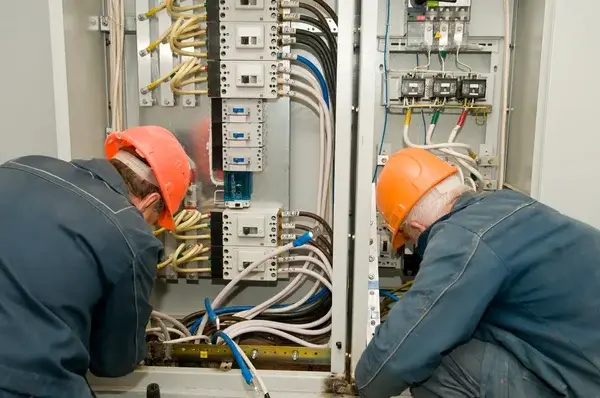
Ventilation (vent) or exhaust fans pull moisture, smoke, heat, and fumes from your indoor air. They are typically used in bathrooms and kitchens and many building codes now require the installation of vent fans during new construction or heavy-duty remodels.
When should I use an exhaust fan?
Many homeowners think that your bathroom fan is used to remove odors from the air, but this forgettable addition to your home does a lot more than we may realize.
NOTE: Special consideration should be taken when using ventilation or exhaust fans during wildfire season. Learn more here.
In the bathroom
Did you know mold takes only 24 - 48 hours to begin growing? Your bathroom has more water usage than almost any other area in your home. Turning your bathroom fan on while bathing will prevent warm, moist air from settling on your walls and ceilings and contributing to mold or mildew growth.
In the kitchen
In the kitchen, your exhaust fan also helps vent out airborne grease, unwanted fumes, smoke, heat, and steam from cooking and/or washing dishes. Venting out moisture and fumes from cooking can both save your kitchen from water damage and help to improve your indoor air quality.
How long should I run my fan?
You should turn your bathroom fan on while showering or bathing and leave it on for at least 15 minutes afterward—or until you can no longer see steam on the bathroom mirror.
In the kitchen, turn your fan on 10 minutes before you begin cooking and turn in off at least 10 minutes after you finish. This amount of time gives your vent fan time to properly filter out the contaminants that may have been produced while you were cooking.
What kind of bathroom fan do I need?
Energy recovery ventilator (ERV) vs. heat recovery ventilator (HRV)
Newer homes are a perfect candidate for an ERV (Energy Recovery Ventilator) or HRV (Heat Recovery Ventilator). The best choice for your home depends on what part of the country you live in—for the NW region of the country we use heat recovery ventilators.
ERVs pull moisture out of the inside of the home. Because of this, they run a higher risk of freezing up in our typically cooler temperatures. The job of the HRV is to bring fresh air into the home from outside and send out the stale air from inside the home to the outside. The most important benefit to this system is that fresh air is brought to room temperature before entering your home—this is so the HRV doesn’t fight the function of your furnace as it heats your home in the cooler months.
Installing an HRV system yourself is not recommended as the process requires work to exterior walls, so it’s best to let the professionals complete this job for you. Call A-TEMP Heating, Cooling & Electrical today at (503) 694-3396 or contact us online for a quote on exhaust or vent fan installation!
5 Star Rated
Quality Service That Will Make You Smile

Serving All Members of Your Family
Family is built into our company name. For over 50 years, our family-owned & operated HVAC business has taken care of our neighbors. We focus on care for our team so they can focus on care for our customers.


.webp)
.svg)


